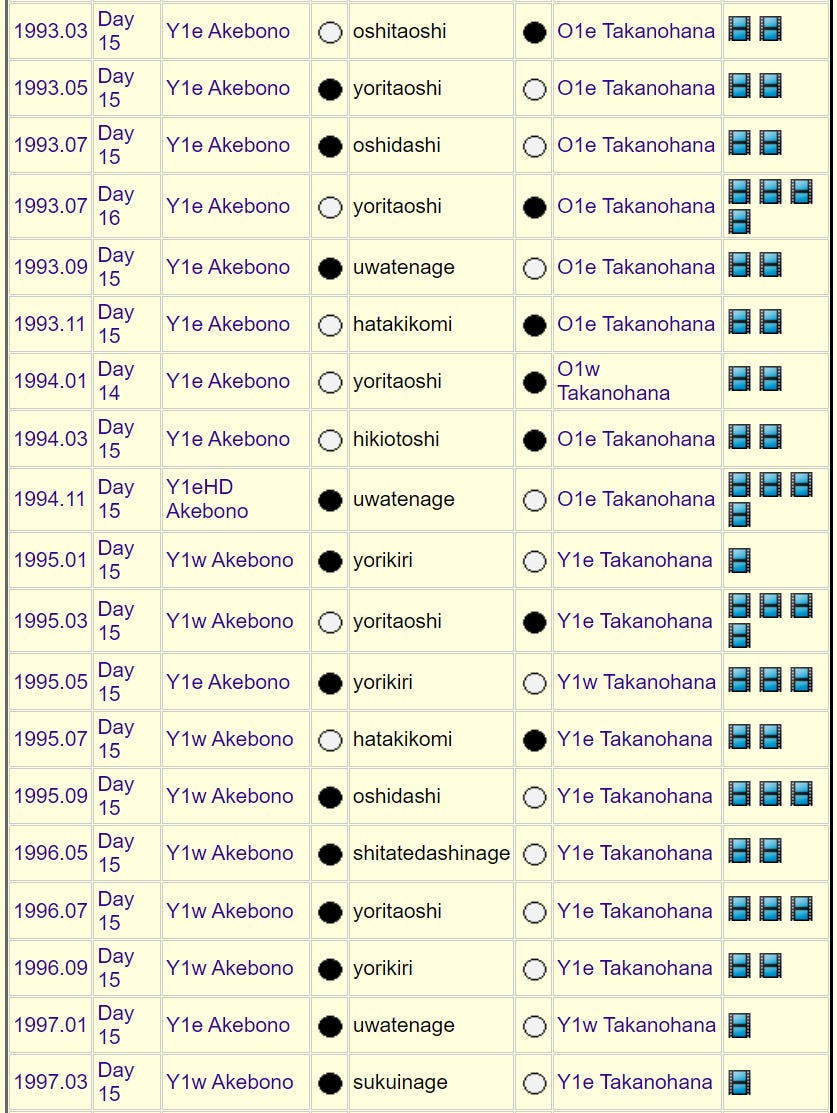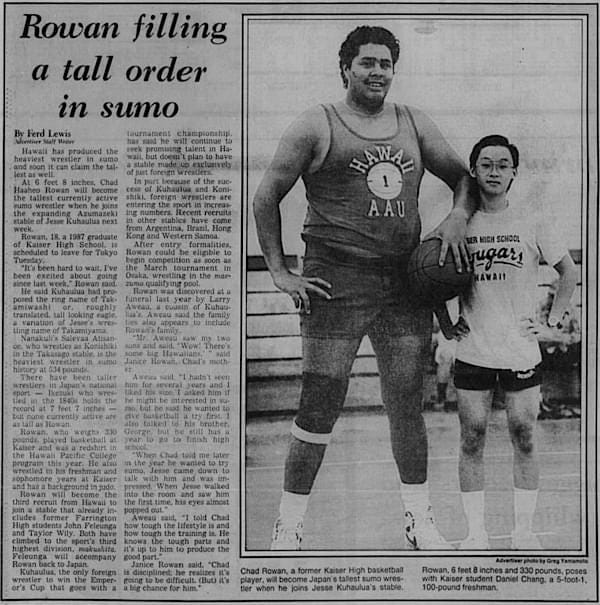RIP, Yokozuna Akebono (UPDATED)
A look back at Akebono's legacy
Recently, the first non-Japanese Yokozuna, Akebono, died.
NY Times: Akebono, First Foreign-Born Sumo Grand Champion, Dies at 54
Taro Akebono, a Hawaii-born sumo wrestler who became the sport’s first foreign grand champion and helped to fuel a resurgence in the sport’s popularity in the 1990s, has died in Tokyo. He was 54.
He died of heart failure in early April while receiving care at a Tokyo hospital, according to a statement from his family that was distributed by the United States military in Japan on Thursday.
When he became Japan’s 64th yokozuna, or grand champion sumo wrestler, in 1993, he was the first foreign-born wrestler to achieve the sport’s highest title in its 300-year modern history. He went on to win a total of 11 grand championships, and his success set the stage for an era during which foreign-born wrestlers dominated the top levels of Japan’s national sport.
Akebono, who was 6-foot-8 and 466 pounds when he was first named yokozuna at 23, towered over his Japanese opponents. Painfully shy outside the dohyo, as the sumo ring is known, he was known for using his height and reach to keep opponents at a distance.
Local news (in Hawaii) coverage:
At my other substack, I will look at the potential higher mortality of sumo wrestlers (and other pro athletes, in particular sports.) Here in Sumo Stats, let me look at the sumo legacy of Akebono.
UPDATE Other substack post:
Takanohana and Akebono
On X/twitter, Patricia Dobashi provided an English translation of remarks from fellow Yokozuna Takanohana:
I would like to express my condolences.
I have memories of many matches that Yokozuna Akebono and I had together, but it is about our training for six-months in sumo school that comes most to mind now.
There were three rings for about 130 young wrestlers which were divided into rings A, B, and C.
The most fierce fighters were in ring A; that's where I met Akebono and our history together began. Akebono-san endured many hardships in coming from Hawaii to Japan and experiencing our culture.
I believe a hundred fold that he possessed an indefatigable view of life. It is my hope that from now on he is at ease and in peace.
Takanohana Koji, 65th Yokozuna
As noted in the NY Times piece, Akebono was the 64th Yokozuna. Takanohana and Akebono were often against each other:
(thanks Don Don, who has the best historic compilations!)
And the Sumo Database has all the stats!
As an aside - whoever built the Sumo Database, they started with Akebono as rikishi #1. Isn’t that interesting?
Now, that’s just at the beginning of their matchups (and the numbers in the brackets were when they were in playoffs against each other).
Let’s just focus on when Akebono was a Yokozuna (Takanohana was at least an Ozeki for
When it says “Day 16”, that’s a playoff match.
Black = loss, white = win.
Akebono retired in January 2001.
Here is a summary:
That was his big rivalry at the time.
Just to point out the disparity in winning moves — yoritaoshi were used by both against each other: that’s frontal crush out, and that can be brutal.
Yorikiri is pretty standard, so nothing to say about that.
But interesting - Takanohana used uwatenage against Akebono successfully 5 times. I love me some good overarm throws.
So while Akebono had no specific dominant technique against Takanohana specifically, he did have a variety of moves he could use. That’s interesting to me, given his sheer size in both height and bulk.
A song on the Hawaiian Rikishi
Israel "IZ" Kaʻanoʻi Kamakawiwoʻole singing about a trio of top-level sumotori - in addition to Akebono, he also mentions Musashimaru and Konishiki.
Musashimaru is 52 and Konoshiki is 60. They are still alive.
Akebono’s Kimarite Distribution
The oshidashi/yorikiri bit isn’t that interesting, other than that’s not how Akebono lost, generally. He was more vulnerable to uwatenage and hikiotoshi.
The interesting standout move by Akebono was tsukidashi, which is frontal thrust-out. The difference between this and oshidashi is that the wrestlers don’t need to keep contact with their opponent.
UPDATE: Spreadsheet
Akebono’s Last Tournament Win
It was November 2000.
Multiple Sources on Akebono
Sumo Fandom Wiki page on Akebono
ESPN page on Akebono from 2021









I really enjoyed this. Thank you!